Laminate flooring is a popular choice for homeowners due to its affordability, durability, and ease of installation. However, over time, laminate floors can become worn, scratched, or faded, leaving homeowners wondering if they can be refinished. The answer is not a straightforward yes or no, as the process of refinishing laminate flooring is different from that of traditional hardwood floors.
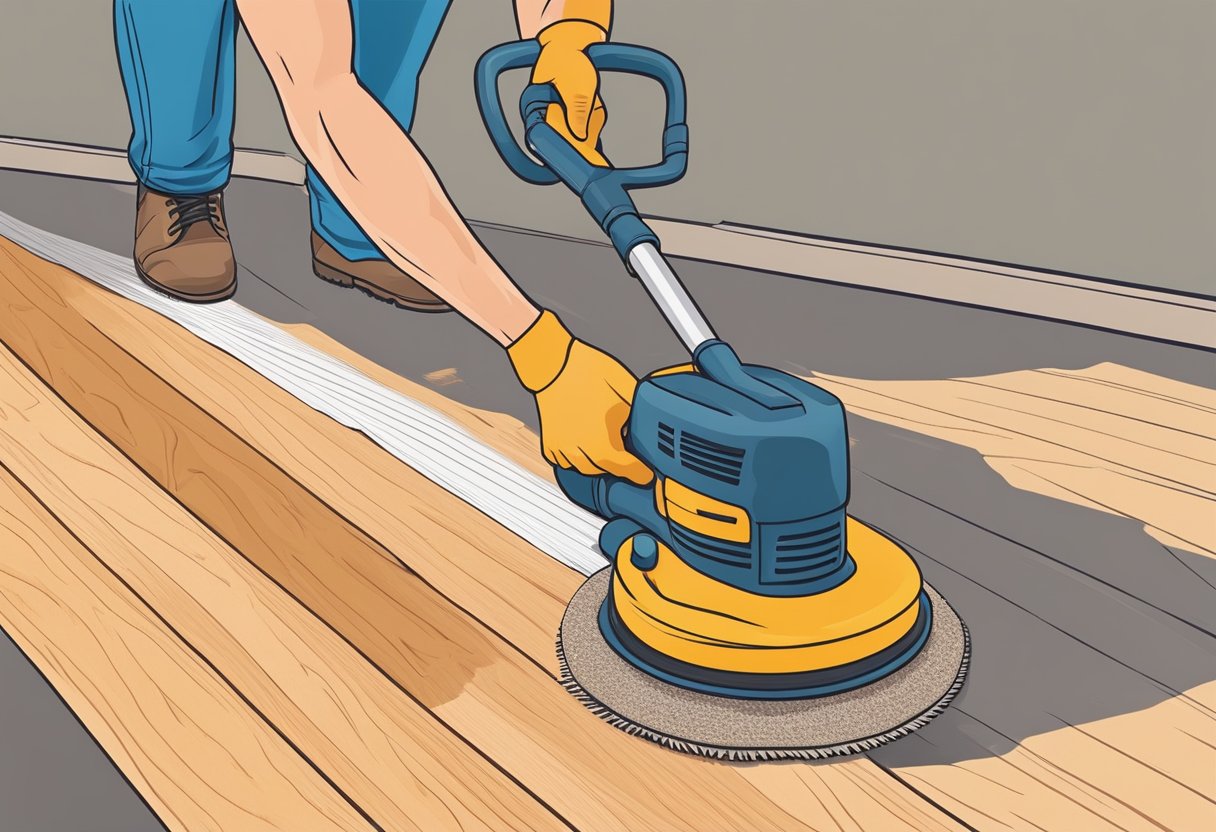
While laminate floors cannot be sanded down and refinished like hardwood floors, there are alternative methods to restore their appearance. One option is to paint the laminate floor with a specially formulated paint designed for use on floors. Another option is to stain the laminate floor, which can give it a new look without the need for replacement. However, it is important to note that these methods may not be as long-lasting as traditional refinishing methods.
In addition to alternative refinishing options, preventative measures and proper maintenance can help prolong the life of laminate floors. Regular cleaning and avoiding exposure to excessive moisture and sunlight can help prevent wear and damage. Knowing when to replace instead of refinish is also important, as heavily damaged or outdated floors may not be salvageable.
The Reality of Refinishing Laminate Flooring
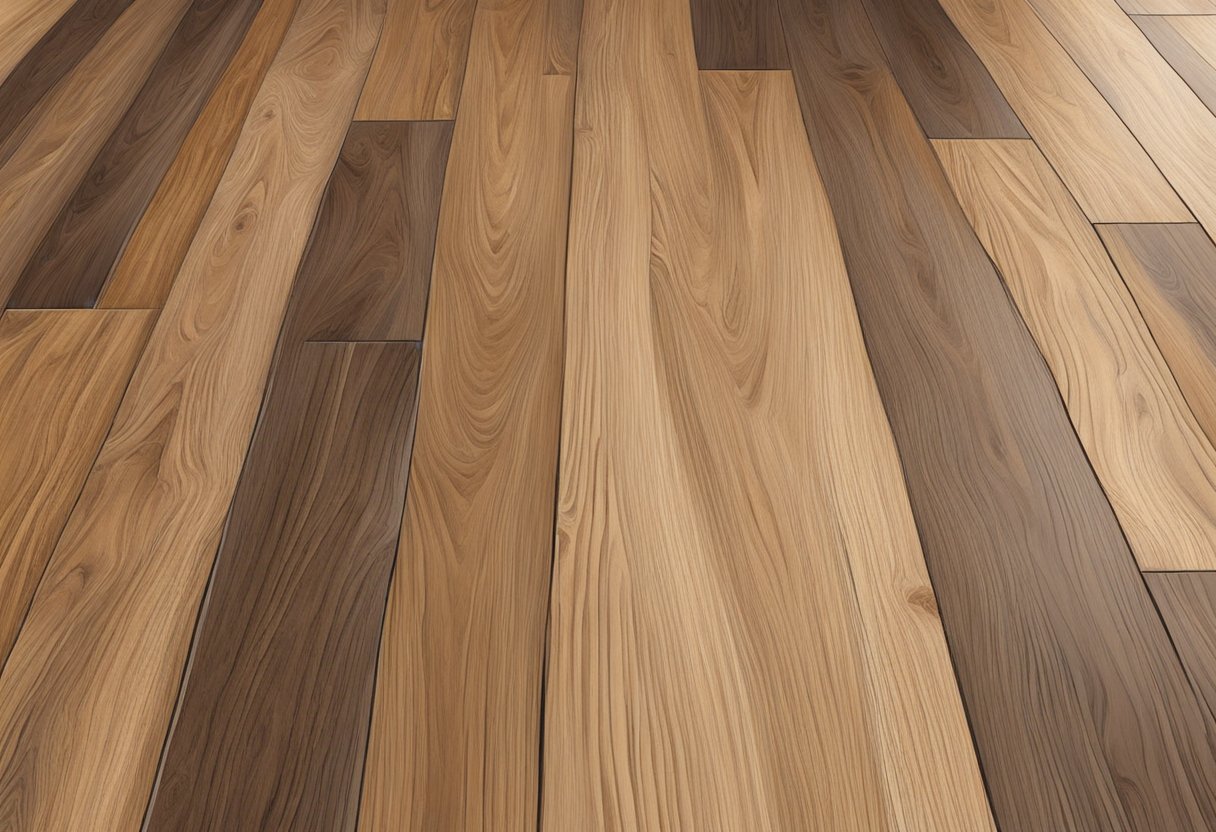
Laminate flooring is a popular choice for homeowners due to its affordability and durability. However, one of the drawbacks of laminate flooring is that it cannot be refinished in the traditional sense. Unlike hardwood flooring, which can be sanded down and restained to give it a fresh new look, laminate planks are made up of several layers, with a thin outer layer that makes up the visible design. This layer cannot be removed or refinished without damaging the plank.
While it is not possible to refinish laminate flooring in the traditional sense, there are alternative methods available to homeowners who want to give their laminate floors a new look. One such method is resurfacing, which involves applying a new layer of material on top of the existing laminate. This process can be done by a professional or as a DIY project, and can be a cost-effective way to update the look of a room without having to replace the flooring.
Another option for homeowners who want to change the look of their laminate flooring is to use a laminate floor paint. This type of paint is specially formulated to adhere to laminate surfaces and can be used to create a variety of different looks, from a solid color to a faux wood grain. Laminate floor paint is relatively easy to apply and can be a budget-friendly way to update the look of a room.
In conclusion, while it is not possible to refinish laminate flooring in the traditional sense, there are alternative methods available to homeowners who want to update the look of their floors. Resurfacing and laminate floor paint are two options that can be cost-effective and relatively easy to do. Homeowners should consider these options before deciding to replace their laminate flooring.
Painting Laminate Floors: A Viable Refinishing Option
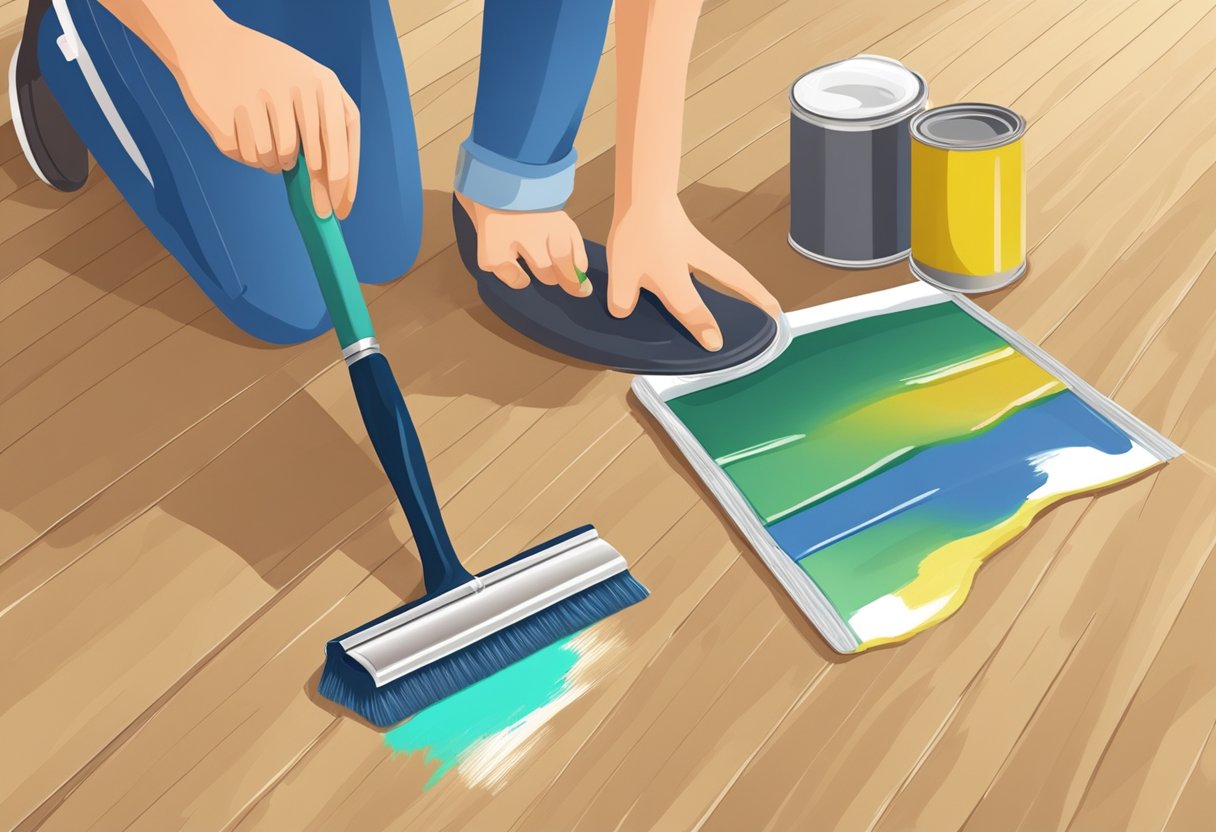
Painting laminate floors can be a viable refinishing option for homeowners who want to give their floors a new look without breaking the bank. While laminate floors cannot be refinished in the traditional sense due to their construction, painting them can provide a fresh and updated appearance.
To paint laminate floors, it is important to properly prepare the surface by cleaning and sanding it. This will help the paint adhere to the laminate and prevent it from peeling or chipping. It is also recommended to use a primer specifically designed for laminate surfaces to ensure maximum adhesion.
When choosing a paint color, homeowners should consider the overall style and color scheme of the room. Neutral colors such as white or gray can provide a clean and modern look, while bold colors can add a pop of personality to the space.
It is important to note that painted laminate floors may require touch-ups or repainting over time due to wear and tear. However, with proper care and maintenance, painted laminate floors can last for several years and provide a cost-effective refinishing option for homeowners.
Staining Laminate Flooring: Exploring the Possibilities
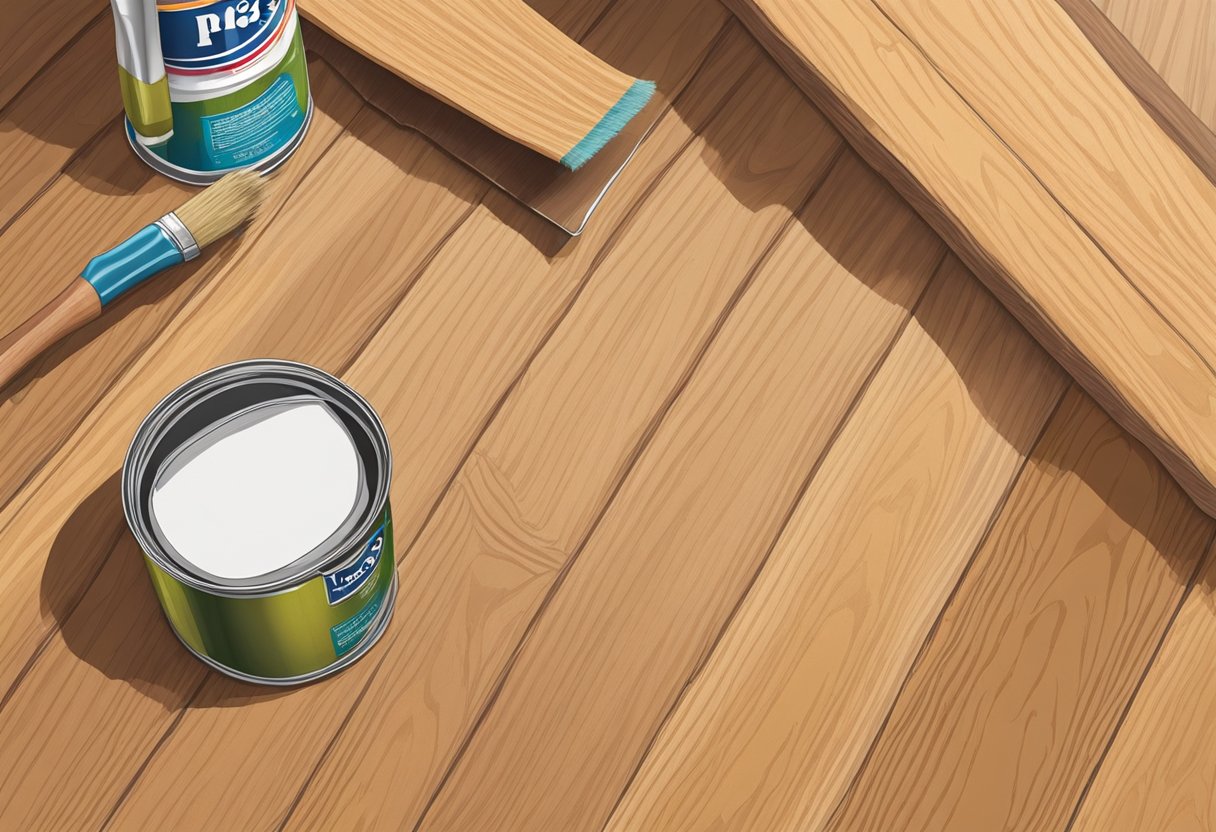
Staining laminate flooring is a popular way to change the color of your floors without having to replace them entirely. However, unlike hardwood or concrete floors, laminate flooring is non-porous, which makes it difficult to apply traditional floor stains.
Fortunately, there are alternative methods to change the color of your laminate floors. One such method is to use paint. Paint is meant to dry on top of a surface, so it is acceptable to use on laminate flooring. However, it is important to note that paint can be more prone to chipping and peeling than traditional floor stains.
Another method is to use a gel stain. Gel stains are thicker and easier to apply than traditional floor stains, making them a great option for DIY projects. However, it is important to note that gel stains can be more expensive than traditional floor stains.
It is also possible to use a tinted sealer to change the color of your laminate floors. Tinted sealers are designed to penetrate the surface of the flooring, providing a more durable and long-lasting finish than paint or gel stains.
Overall, while staining laminate flooring can be a bit more challenging than staining traditional hardwood floors, there are still plenty of options available to achieve the desired look. It is important to do your research and choose the method that is best suited for your specific flooring and desired outcome.
Alternative Refinishing Options for Laminate Floors
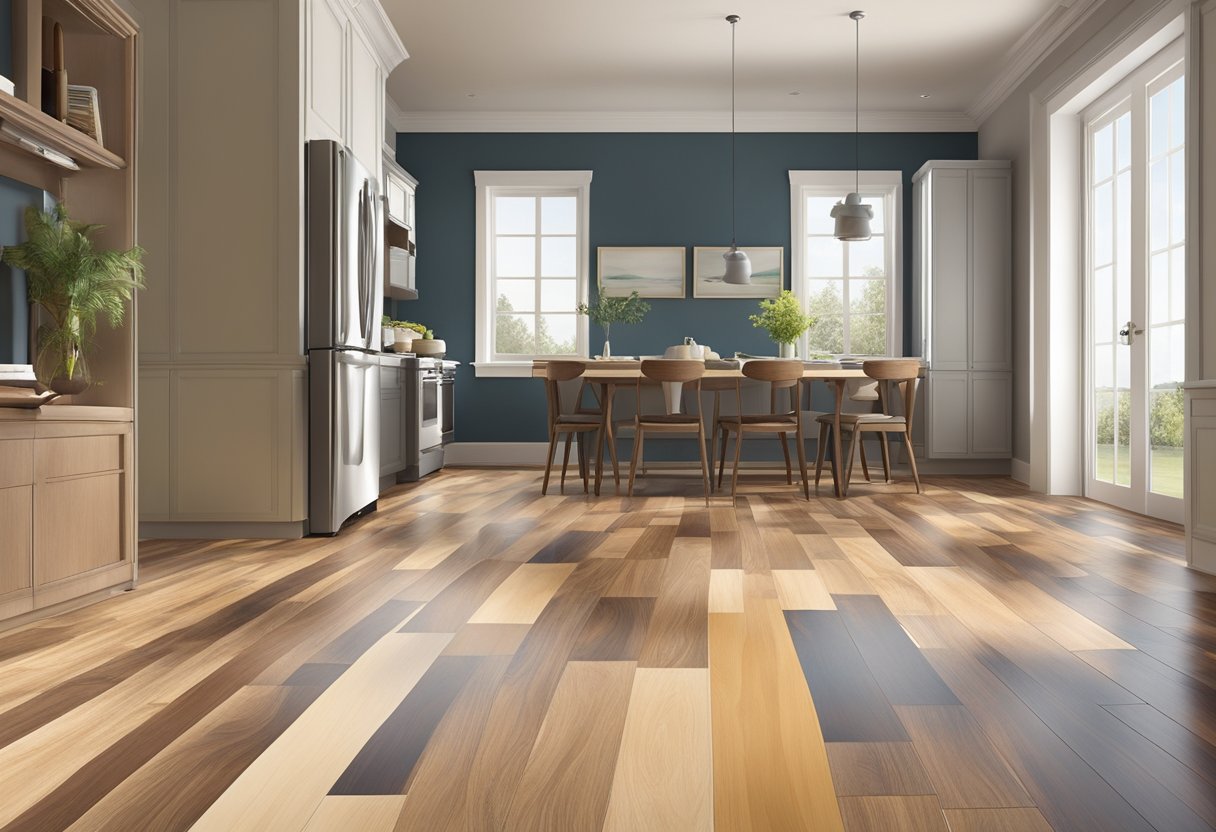
There are several alternative refinishing options for laminate floors that can help renew the surface without the need for sanding or refinishing. These options include:
-
Laminate Floor Renewal Products: These products are designed to restore the shine and luster of laminate floors. They come in various forms, including sprays, polishes, and waxes. They are easy to apply and can help cover up minor scratches and scuffs.
-
Flooring Overlays: Flooring overlays are a type of vinyl flooring that can be installed over existing floors. They are available in various colors and designs, and can be used to cover up laminate floors that are worn or damaged. They are easy to install and can be a cost-effective alternative to refinishing.
-
Flooring Stickers: Flooring stickers are a type of vinyl decal that can be applied to laminate floors. They come in various designs and patterns, and can be used to cover up scratches and scuffs. They are easy to apply and can be a fun way to update the look of a room.
It is important to note that these alternative refinishing options may not be suitable for all laminate floors. It is important to test the products on a small, inconspicuous area before applying them to the entire floor. Additionally, these options may not be as durable as refinishing, and may need to be reapplied more frequently.
Preventative Measures and Maintenance
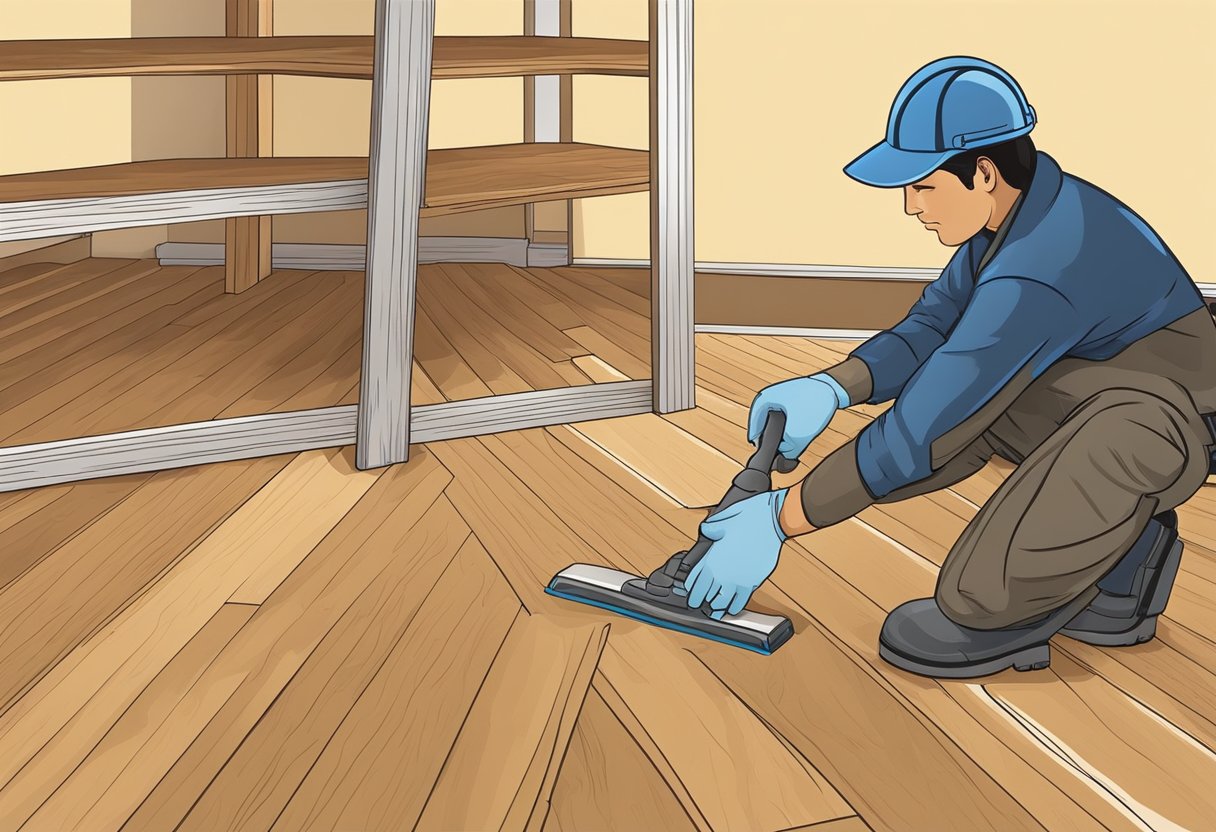
Laminate floors are a popular choice for homeowners because they are durable, affordable, and easy to install. While they cannot be refinished like hardwood floors, there are preventative measures and maintenance steps that can be taken to keep them looking their best.
To prevent scratches and damage to laminate floors, it is important to use furniture pads or coasters under heavy furniture and avoid dragging furniture across the floor. Area rugs or mats with a non-slip backing can also be used in high-traffic areas to protect the flooring.
Regular cleaning is essential to maintain the appearance of laminate floors. Sweeping or vacuuming with a soft-bristled brush attachment can remove dirt and debris, while a damp mop can be used for deeper cleaning. It is important to avoid using excessive water or harsh cleaning products, as these can damage the flooring.
In addition to regular cleaning, there are preventative measures that can be taken to protect laminate floors from damage. For example, placing a mat or tray under potted plants can prevent water damage, while using blinds or curtains to block direct sunlight can prevent fading and discoloration.
By taking these preventative measures and following a regular maintenance routine, homeowners can keep their laminate floors looking their best for years to come.
When to Replace Instead of Refinish

There are certain situations where it may be more practical to replace laminate flooring rather than refinish it. Here are some scenarios where replacement may be a better option:
- Severe damage: If the laminate flooring has severe damage such as deep scratches, chips, or holes, it may be difficult to refinish it. In such cases, it may be more cost-effective to replace the flooring altogether.
- Water damage: Laminate flooring is susceptible to water damage, and if the damage is extensive, it may be better to replace the flooring. Water damage can cause the laminate to warp, swell, or buckle, which cannot be repaired through refinishing.
- Wear and tear: If the laminate flooring has been in use for a long time and has extensive wear and tear, refinishing may not be enough to restore its appearance. In such cases, replacing the flooring may be a better option.
In summary, while laminate flooring can be refinished, there are certain situations where replacement may be necessary. It is important to assess the extent of damage before deciding whether to refinish or replace the flooring.
Conclusion
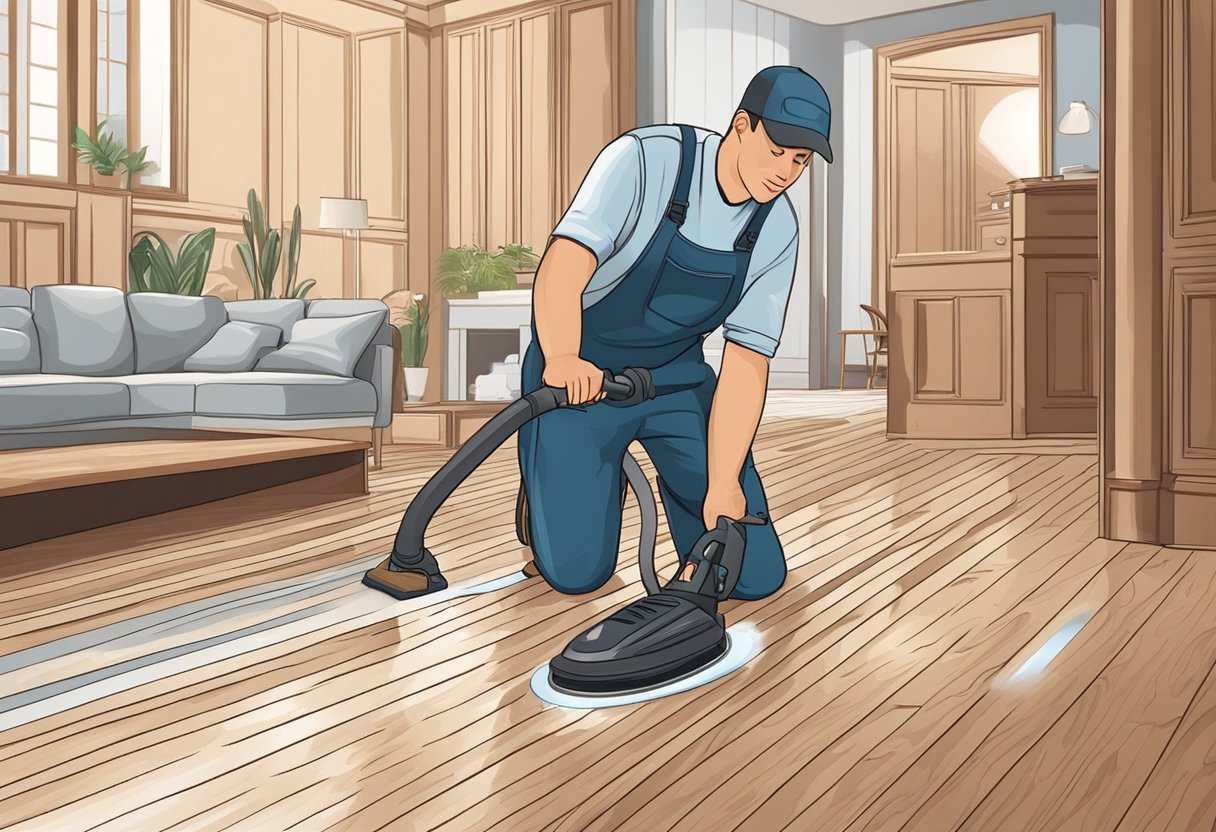
In conclusion, laminate floors can be refinished, but the process is more complicated than refinishing hardwood floors. Household Advice recommends using a chemical etcher to remove the top layer of the laminate before applying a new stain. This process is effective and easy to do, but it can be time-consuming.
Another option is to use laminate floor renewal products to enhance the appearance of the laminate floors. These products are designed to fill in scratches and restore the shine to the laminate surface. Woodworking Advisor suggests that regular cleaning and maintenance can also help to renew laminate floors and prevent the need for refinishing.
It is important to note that laminate floors cannot be sanded down like hardwood floors, as they do not have a grain. Woca Woodcare explains that the color and grain on laminate floors are actually just images printed onto the fiberboard and sealed by a layer of protective resin. Therefore, the only way to refinish laminate floors is to remove the top layer of the laminate and apply a new layer of stain or sealant.
Overall, refinishing laminate floors is possible, but it requires careful preparation and attention to detail. With the right tools and products, homeowners can renew the appearance of their laminate floors and extend their lifespan.
Frequently Asked Questions
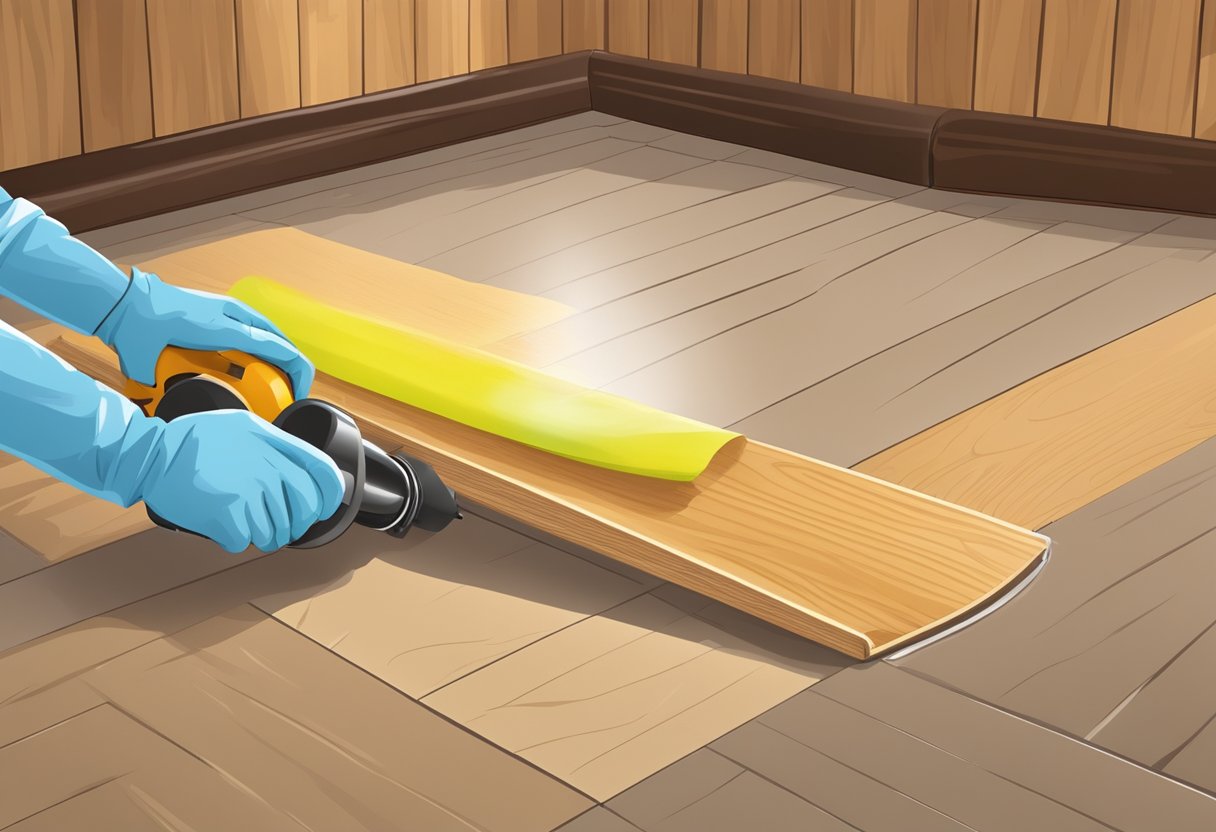
What is the best method to restore the appearance of my laminate flooring?
The best method to restore the appearance of laminate flooring is to use a laminate floor cleaner. This cleaner is specially formulated to remove dirt and grime from the surface of the laminate without damaging it. It is important to avoid using harsh chemicals or abrasive cleaners, as these can scratch or damage the finish of the laminate.
Is it possible to change the color of existing laminate floors?
No, it is not possible to change the color of existing laminate floors. Laminate floors are manufactured with a photographic layer that gives them their color and pattern. This layer is fused to the core of the laminate during manufacturing, making it impossible to change the color of the floor once it has been installed.
How does one go about refinishing laminate flooring?
Laminate flooring cannot be refinished in the traditional sense. Unlike hardwood floors, which can be sanded down and refinished, laminate flooring is made up of multiple layers that cannot be sanded down. However, there are some products available that can help to restore the appearance of laminate flooring, such as laminate floor restorers.
Are there specific products recommended for refinishing laminate floors?
Yes, there are specific products recommended for refinishing laminate floors. These products include laminate floor restorers, which are designed to restore the shine and luster of laminate flooring. It is important to choose a product that is specifically designed for use on laminate flooring, as other types of floor cleaners or restorers may damage the laminate.
Can laminate floors be painted or stained for a new look?
No, laminate floors cannot be painted or stained for a new look. The photographic layer that gives laminate flooring its color and pattern is fused to the core of the laminate during manufacturing, making it impossible to change the color of the floor once it has been installed.
What are the steps involved in resurfacing a laminate floor?
Resurfacing a laminate floor involves cleaning the floor thoroughly, filling in any gaps or cracks with wood filler, sanding down any rough spots, and applying a new layer of finish. However, it is important to note that laminate flooring cannot be sanded down in the traditional sense, as it is made up of multiple layers that cannot be sanded down. Instead, a laminate floor restorer can be used to help restore the appearance of the floor.